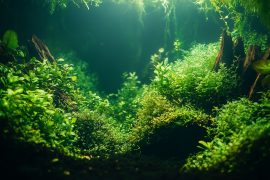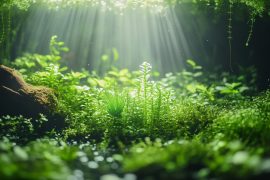When I attempted my first “real” aquascaping project, it literally looked like a madman had taken a glass container filled with rocks and plants, then gave it a good shake. I was twenty-two, fresh out of college, and for some reason convinced that my biology degree entitled me to life-perpetually-inspiring-in-my-society level optimism and that I could spearhead the crafting of deep-sea masterpieces right off the bat. Everything was arranged symmetrically—mountain of lava rock dead center, plants arranged at eerie intervals, and a perfectly straight line of indistinguishable stem plants beautifully aligned at the back wall like soldiers standing guard in a bay. It was awful. Sure, it served its purpose, but it was as natural looking as a plastic Christmas tree in mid-july.

My friend Marcus, a landscape photographer who has never stepped foot inside an aquarium, takes a look and says, “It’s very… organized.” Clearly, he was not paying me a compliment. Later, over pizza and beers, he opened his camera, and to my surprise, told me to check out his recent Yosemite trip. “Notice anything?” He asked. “Any glaring omissions?” I replied, and proudly pointed at the stunning views. “There’s nothing in nature that’s perfectly symmetrical,” he said. “The magic is in the chaos.”
That conversation, in tandem with multiple other stories from breaching friendships, altered my understanding of aquascaping. A decade and a half later, still hearece his voice if placing a focal, perfect stone in the center of the tank or arranging a plant grouping a bit too orderly. Nature, in its entirety, is not neat and tidy. It’s something far better: perfectly imperfect, which is, ironically, for lack of a better term, a lot of aquascaping is about trying to simulate.
The junction where one finds aquascaping sitting is where artistic vision meets technical skill. Water chemistry, plant physiology, and even the dynamics of filtration have to be mastered, but even that abominable approach won’t cut it when it comes to underwater landscaping. The best ones touch something deep within us. Something primal that works subconsciously and warps it in a pattern of nature recognizing and articulating through raw instinct.
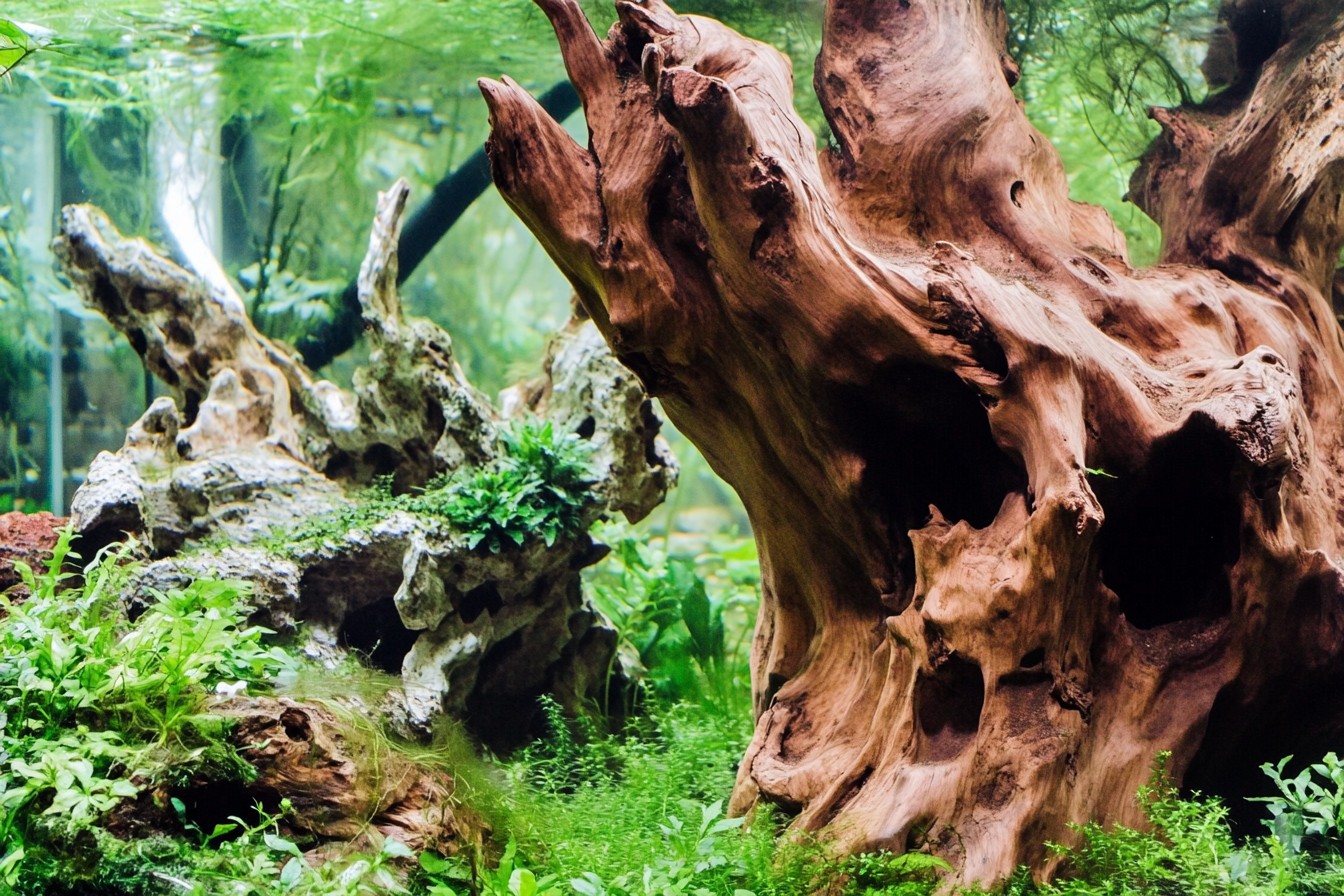
Aquascaping is well encompassed by the Japanese philosophy of wabi-sabi– finding beauty in life’s fleeting moments as well as flaws. An aquascape that is truly pleasing to the eye isn’t one that remains frozen like a photograph, rather, it’s a dynamic piece of art that transforms every single day due plant growth, fish movement, and even the supremely unglamorous yet beautiful growth of algae. I’ve spent decades meticulously controlling every single aspect of my tanks only to find out that the most successful creations were the ones which emerged when I decided to surrender control and let nature take command.
Every underwater gardening enthusiast should have some knowledge of traditional sculpture and photography because it can starkly improve one’s aquascaping skills. Elements such as the rule of thirds, leading lines, focal points, and texture contrasts apply just as much as they do in traditional photography and painting. However, such a wondrous skill requires the knowledge of when to deliberately ignore these rules.
The driftwood and plants in my 120-gallon South American biotope tank are chaotically arranged, breaking every compositional rule out there. Somehow it works, however, because it imitates the chaotic beauty of a flooded Amazonian margin. In contrast, my 60-gallon “mountain stream” tank is much more traditional, following the classical triangular composition using seiryu stone to create perspective and scale which makes the tank appear much larger than it actually is.
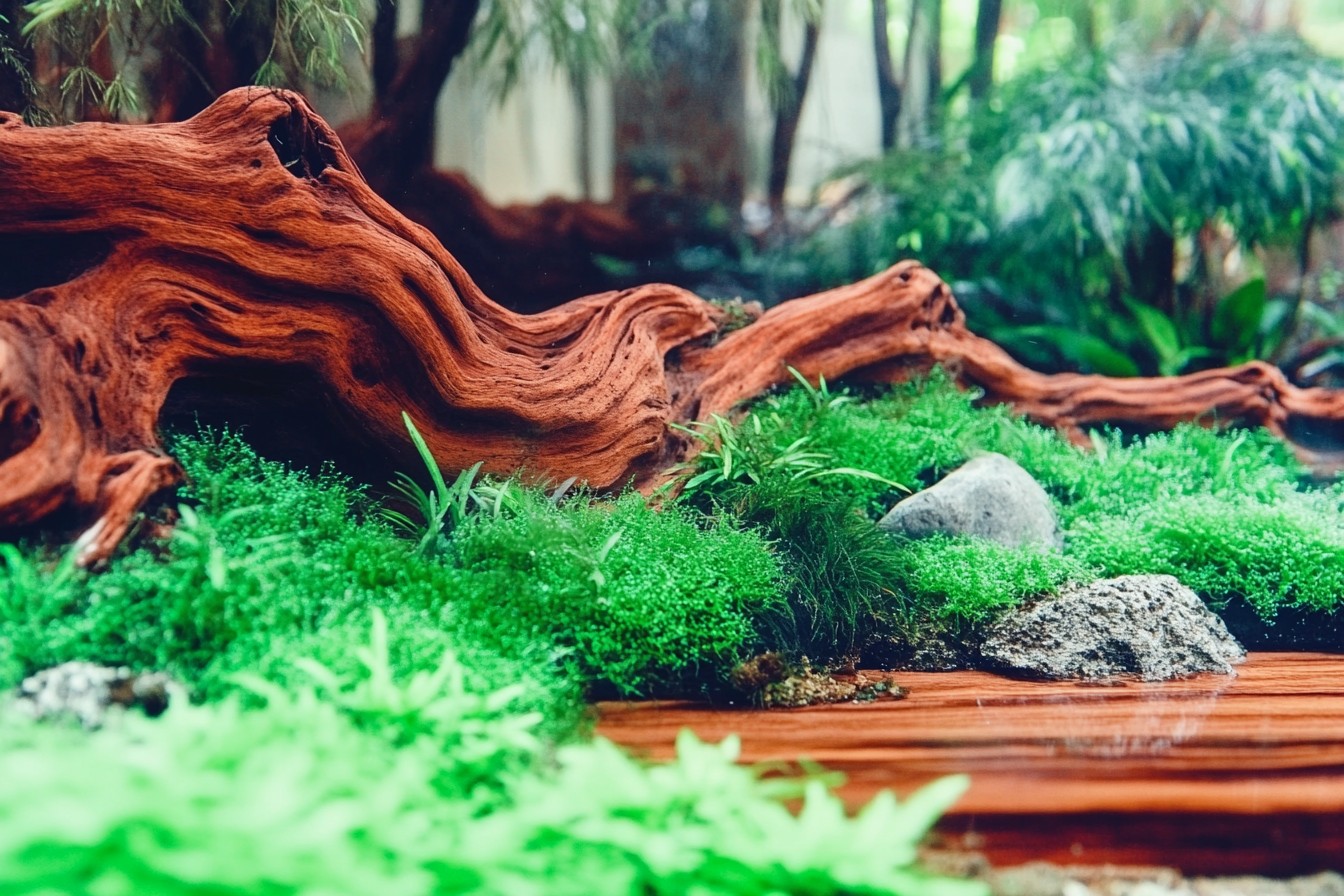
Your aquascape starts with the hardscape. As the name suggests, hardscape incorporates rocks, wood, and other non-living materials. In fact, the hardscape consists of the backbone of your aquascape. Personally, I love spending time selecting and positioning hardscape materials, and more often than not I will go through five or six iterations before I put any water into the tank. Pro tip: photograph each variation from different angles. The view from the top is often very different from the front view, so it’s often not the most balanced-looking angle.
I will never forget that one weekend when I spent almost two entire days finding the perfect arrangement of three pieces of spider wood for a 40-gallon tank. I must have crafted and destroyed more than 15 different configurations. My wife thought I was going crazy — which I kind of was — but that tank went on to win its category in a regional aquascaping competition, so clearly, the obsessiveness paid off.
Now that the hardscape is established, the softscape will just be an addition that completes the existing figure, rather than being in competition with it. I still cannot believe how many aquascapers — including my younger self — to approach planting with a collector’s mentality scrunching in one of every cool species they can find instead of picking out a palette that works together. Some of the most striking tanks I’ve created used just three or four plant species, arranged in groupings that are far more natural.

There is careful consideration of scale here. Positioning smaller plants near larger hardscape features creates the illusion of greater size and distance which landscape architects have used for centuries, known as forced perspective. In my current nature aquarium, I use dwarf hairgrass (Eleocharis acicularis ‘Mini’) and dwarf baby tears (Hemianthus callitrichoides) with large pieces of mountain stone, which makes the 30-gallon tank seem much larger than it actually is.
Negative space needs further emphasis because it is usually the most common underappreciated and unrecognized design element. Not all empty space needs to be filled. Open spaces of sand, clear patches of water, or even intentionally empty areas of sculpture provide breathing space that strengthens the entire composition. My biggest error as a beginner was overcrowding—stuffing all free spaces until the aquarium resembled an underwater jungle sale at a garden center.
Don’t forget, your aquascape echoes in three dimensions. Creating depth is most likely the biggest challenge in this form of art, especially in standard rectangular tanks, which tend to be shallow front to back. Employing a mixture of mid-ground terracing, strategic background planting, and careful positioning of hardscape elements can make a meticulously arranged aquascape appear genuinely as if three-dimensional depth has been added. I’ve dismantled more than one aquascape during the final viewing stage for ordering the components in a way that was stunning from above, but dismally two-dimensional when viewed from the front.
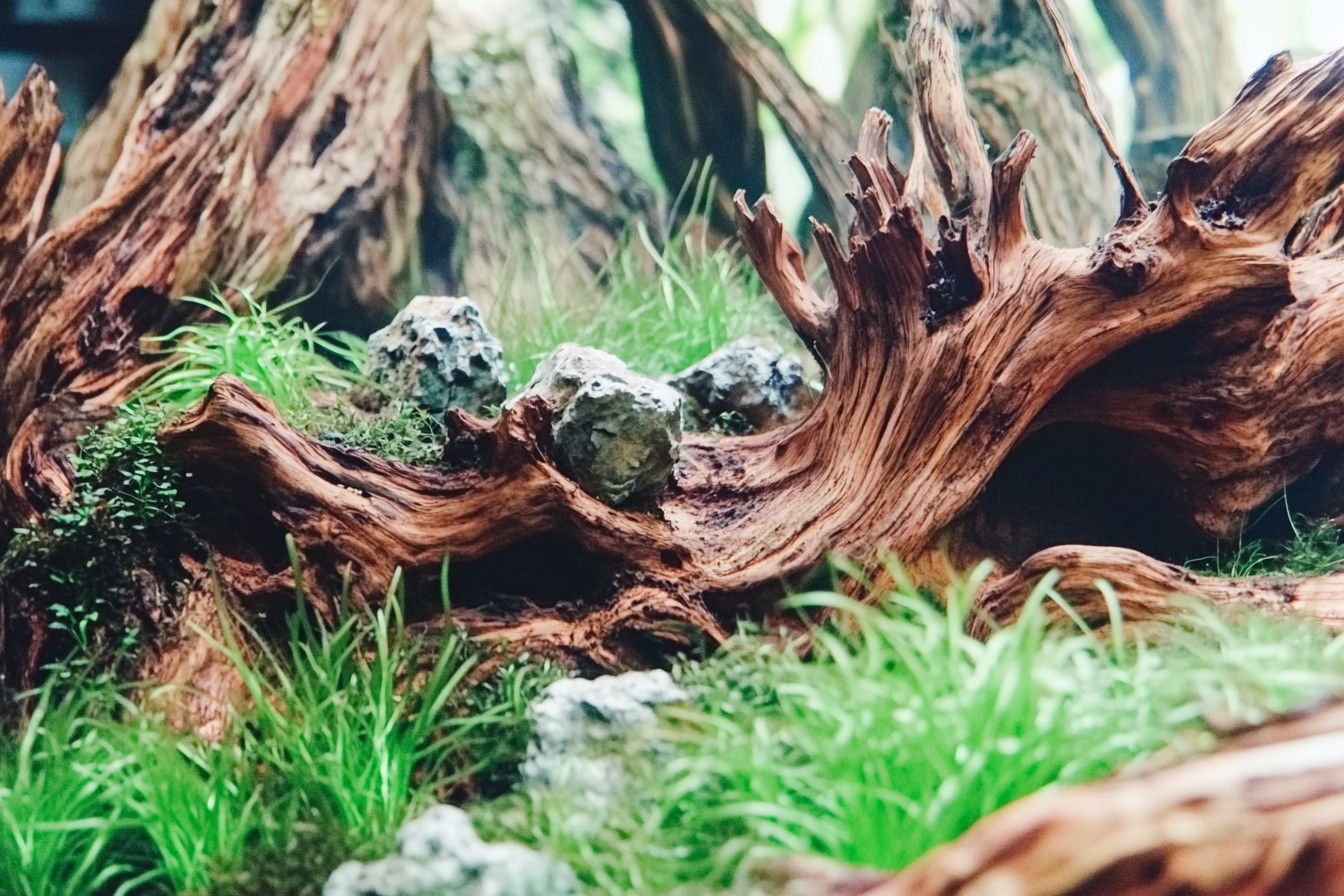
Light is essential to a creation’s perception. Customized, professionally sculpted aquascapes invariably have elegance yet I often see unimaginatively arranged tanks that are simply beautiful on paper imploding mortally due to flat, unmodulated lighting dispensed with harsh shadows devoid of fabulous dimension, and devoid of drammatique. Gentle, directional lighting that provides subtle shadows and aids to create highlights seldom seen can morph even the simplest arrangements into dazzling spectacles. In my home office nano tank, I, in fact, decreased the number of LEDs from three to one. Now, light emanating slightly off-center creates dramatic light rays penetrating the water like sunlight streaming through the forest canopy.
Although the scope of our “palette” as aquascapers is more limited than other artists, color theory is still effective even underwater. For choosing plants, I try to work with complementary and analogous color schemes. My Dutch-inspired tank features a striking color progression of deep red into purple, green, and finally bright yellow. This natural color flow serves to direct the viewer’s eye throughout the aquascape.
Aquascapes often fail during the fish selection stage. Those neon tetras might be your personal favorite, but their bright blue and red coloration would clash with the tranquil, subdued woodland fern stream the wood-and-fern arrangement aims to depict. Fish should support your design instead of competing with it. Think about the color, size, movement pattern, and behavioral traits of the fish before making your selections.
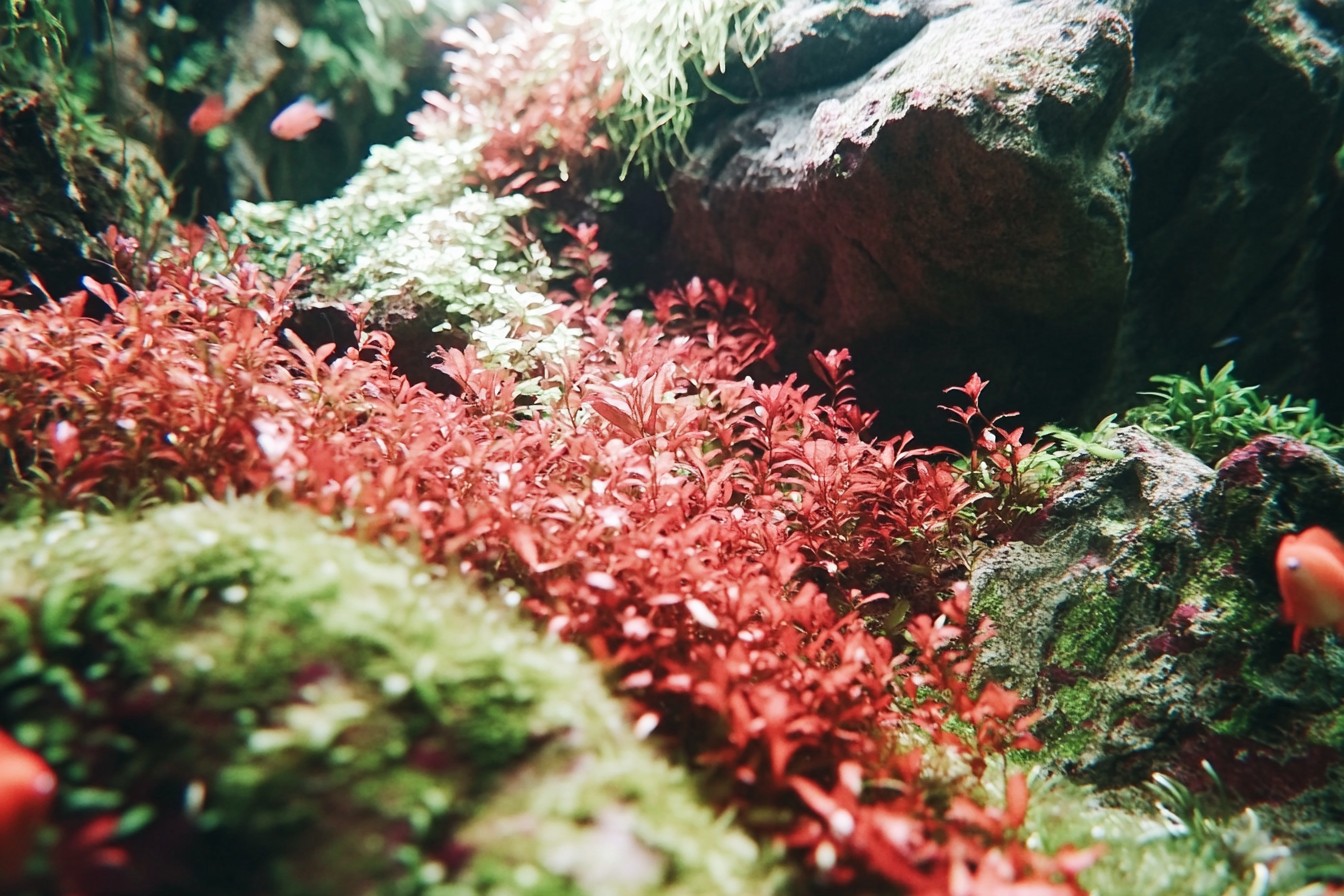
A common misconception is that visually striking fish work perfectly in any setting; some of the more unusual looking tank displays were my favorite. Featuring unremarkable fish, like this small group of chocolate gouramis, that are placed in the right setting can prove to be quite spectacular. Standard aquarium lighting doesn’t do much for the gouramis, but warm LEDs set to dimmed show off their beauty. So long as the water is tannin stained, the gouramis shine like copper pennies drifting among mysterious shadows. Context is crucial.Without the proper maintenance, your aquascape will either flourish or perish, depending on the effort put into it. As stunning as the first presentation of an exquisitely detailed tank may be, it is pointless if it does not sustain itself long-term in the ecosystem created within it. When designing tanks, I think of my future self—the one who will be elbow-deep in water and has to navigate the intricacies of weekly maintenance. Will I be able to access all the regions that need pruning? Can the filter intake be easily cleaned? Have I made any hardscape arrangements that are guaranteed to trap debris in impossible nooks and crannies?
After crafting intricate designs for a 90-gallon paludarium, I realized it was an absolute maintenance nightmare. My astounding design felt overly complicated and dizzying, only looking beautiful for the first month. My elaborate hardscape created dozens of tiny debris traps that were impossible to clean without dismantling half the setup. As a result, I removed it entirely, despite the hours of work it represented, simply because I feared the maintenance required. Now I test every design by running through mental maintenance scenarios before adding water.
Over many years of beneficial experiences and total failures, it clicked for me that the process of aquascaping involves building relationships, be it the relationship between the components of the tank, the viewer of the tank, and most significantly, the relationship between nature and our fast-paced modern civilization. A truly successful aquascape is eye-catching, yes, but does also convey a snapshot of connection to something greater than ourselves.
While I was watching television last week, I had my neighbor who is perpetually stressed sit right in front of my living room tank. He sat there for around twenty minutes and he gradually seemed to calm down as the cardinal tetras danced around the roots and ferns. He said, “I had no idea tanks could look like this, it’s like a piece of another world.” Looking back at that moment made me understand the most profound success of the art form for me and not through winning competitions or getting my photos admired—rather, in the human connection that was cultivated and showcased through my hobby.
